FARMINGDALE — At Andy Allen’s firewood yard, the kiln he uses to dry firewood is laboring to keep up with demand.
“The cold is my enemy,” Allen said. “When it gets colder, it slows everything down.”
Everything, that is, but the orders for firewood to be delivered. A.W. Allen Firewood, on Maple Street between Hall-Dale High School and Interstate 95, has been getting 30 to 40 calls a day from people searching for hardwood firewood to burn.
Normally, Allen said the average wait time for delivery of his kiln-dried wood in the winter is about two weeks. This year, it’s seven weeks.
“It’s been crazy,” he said, adding that demand is as high as he’s seen in decades, with a back order of 250 kiln-dried cords of wood.
Across Maine, the phones of firewood dealers have been ringing both persistently and long as state residents hunt up wood to burn in woodstoves, fireplaces and furnaces. The cold is also the enemy to the thousands of Maine residents who have been caught off guard by an unusual string of events.
A warm fall, followed by freak storm at the end of October that knocked out power across the state and a prolonged spell of frigid weather in December sent people scrambling for wood, either as a primary source of heat for their homes or to supplement another source. The long cold snap of December and January also quickly drained heating oil supplies and left dealers inundated with calls for refueling.
Firewood dealers say many customers procrastinated getting their orders in because of the mild fall, and pre-order demand for firewood peaked later in the season than usual.
“The thing is, we’ve been doing this a long time,” said Jake Dyer, owner of Southern Maine Firewood in Gorham. “I’ve never seen the weather so bad, so early. It’s one thing if we get a cold day here or there. But we’re having the same problems as everyone else. We can’t keep our equipment running, and we’re busting our butts to make this happen.”
Gary Potter, at Potter Family Firewood in Readfield, in Kennebec County, said most of his regular customers know he has sold nearly all of his wood supply in the fall. He shuts down the firewood operation for the year in November and doesn’t start up again until spring.
In Wilton, James Black has been fielding calls at Black Acres Firewood, but he can’t offer much help.
“The thing with firewood,” Black said, “is that it’s a 12-to-18-month process to get seasoned firewood. Dealers need to have hundreds of cords stockpiled, and it’s hard to determine what the need will be.”
Black said he sold out of seasoned firewood in September and he doesn’t carry much over the winter. Many of his customers get their wood in the spring and season it themselves over a period of months, sometimes a year, until its moisture content is low enough that the wood burns efficiently.
Green wood is generally freshly cut and has the highest moisture content. Because of that, it doesn’t produce as much heat as seasoned wood. Kiln-drying the wood shortens the drying process considerably, but it increases the cost of the wood because of the extra work involved.
“We are selling some green wood,” Black said. “We’re selling ash to the folks who are hard up. It can be burned affordably even with being green.”
SUPPLY AND DEMAND
Even though much of the state’s culture is wrapped up in burning wood for heat during the winter, little is known about that portion of the home heating sector.
Steve McGrath, director of the Governor’s Energy Office, said there are no statistics on how many people in the state rely on wood as a primary source of heat. But it’s clear from market trends that when the price of oil spikes, people turn to wood as a source of cheaper supplemental heat.
And while organizations in Maine are involved in tracking the value of products that are made from the state’s vast forests, including biomass fuel or engineered lumber, they don’t generally track firewood.
“It’s hard to get your finger on some of it,” said Jessica Leahy, a forestry professor at the University of Maine.
How people heat their homes is tracked by the U.S. Census through its American Community Survey. While the information it collects comes with a range of margins of error, it shows that between 2009 and 2016, those who reported using wood as a heat source increased from 47,475 to 72,713.
From a researcher’s perspective, there are many questions.
“We don’t understand the supply on the dealer side, and we don’t understand the demand,” Leahy said. “We don’t understand household behavior if there are two heating sources. How do people choose? Is it purely price, or is it something else?”
In Gorham on Friday, Dyer was scheduling the last of his firewood deliveries at Southern Maine Firewood.
“We’ve only got a day’s worth of wood ahead of us, about 10 to 15 cords, and half of it is already scheduled,” Dyer said.
If he had wishes to burn, it would be these: that people order their wood early and take care of it once it arrives. This time of year, it’s impossible to keep newly cut wood dry, Dyer said. Wood acts like a sponge, and if it’s left exposed, it will soak up moisture from rain or snow and it won’t burn well.
“If you just spent $500 on a cord of wood, spend $10 and get a tarp,” he said.
At the other end of the endless phone calls have been people like Jon Darling.
For the last few years, Darling has been working on a fixer-upper home in Phillips, a Franklin County town about midway between Farmington and Carrabassett Valley. He heats the 19th-century home with two wood stoves, in which he burns wood constantly.
Normally, he’ll work his way through about 12 cords during the winter, but thanks to December’s record-breaking cold, he was running out of wood long beforehand.
Not everyone who burns wood has been caught short this winter.
When Lucas Ahlsen was growing up in Cape Elizabeth — “on the farm side of town,” as he describes it — his parents heated their home exclusively with wood. “We had a pretty regimented lifestyle around the acquisition of firewood,” he said.
Wood would be ordered a year in advance. The yearly chore for the Ahlsens would be getting together to saw and split the wood and store it in the basement.
“Not only did my father have what we needed in the basement by September, but he would have the next stage ready and drying over a winter and a summer,” he said.
Even though he’s grown and in his own home in Westbrook, Ahlsen said he still chips in at his parents’ home in exchange for access to wood to burn in his woodstove to keep his heating bill down.
FILLING ORDERS
On Thursday, Darling took his search online and posted a note on Craigslist. He got a call from someone with a cord and half to sell, but he would have to pick it up, and his truck isn’t running right now.
Instead, Darling struck a deal with a neighbor, who recently switched to a pellet stove for heat and has a couple of cords of wood he doesn’t need any more that Darling could use.
Wood has its plusses and minuses, he said. For Darling, the cost is a plus.
“We had a house in Farmington with oil heat and we went through $4,000 a year. It was crazy. Here, we spend $1,000 a year for wood with the stoves.”
In Farmingdale, the increased demand has made for some long workdays for Allen, which probably will continue, thanks to the return of below-normal winter temperature expected by weather forecasters in the next several weeks. The temperature was expected to dip to zero or below Friday night into Saturday morning.
The lower the outside temperature is, the longer the kiln-drying process takes on the hardwood cords Allen and his son Jake sell. And the longer it takes, the longer the backlog of requests for firewood is.
To dry wood, the kiln runs at 240 degrees. If the outside temperature is minus 10 degrees, the kiln needs to heat at 250 degrees to do its job. If the outside temperature is 30 degrees, the kiln needs to heat at 210 degrees to dry wood.
There are no shortcuts in drying wood.
Normally, Allen said, he works six days a week this time of year to fill both new orders and established ones such as the one from Cushnoc Brewing Co. in Augusta, which gets fuel for its wood-fired pizzas from Allen.
Now he and Jake are working all seven days.
“I start around 7:30 and get done at dark,” he said. Then he has supper and spends the next few hours returning the 20 or 30 calls that have come in during the day.
“It’s just me and my son, Jake,” he said. “Jake bought a new snowmobile this year, but he hasn’t had a chance to use it.”
Jessica Lowell — 621-5632
Twitter: @JLowellKJ
Send questions/comments to the editors.

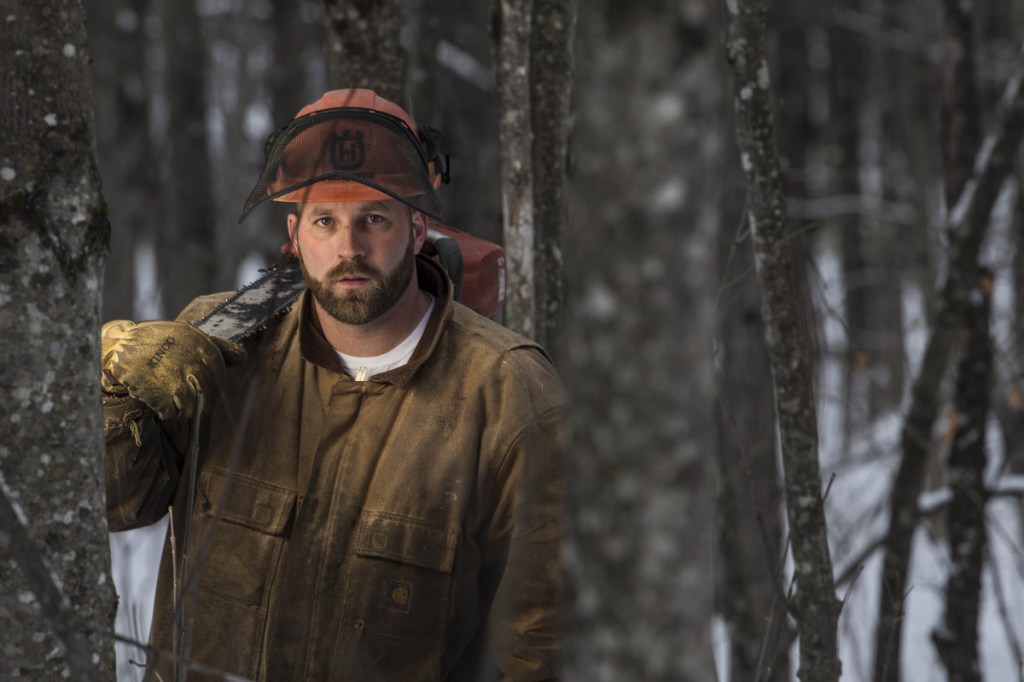
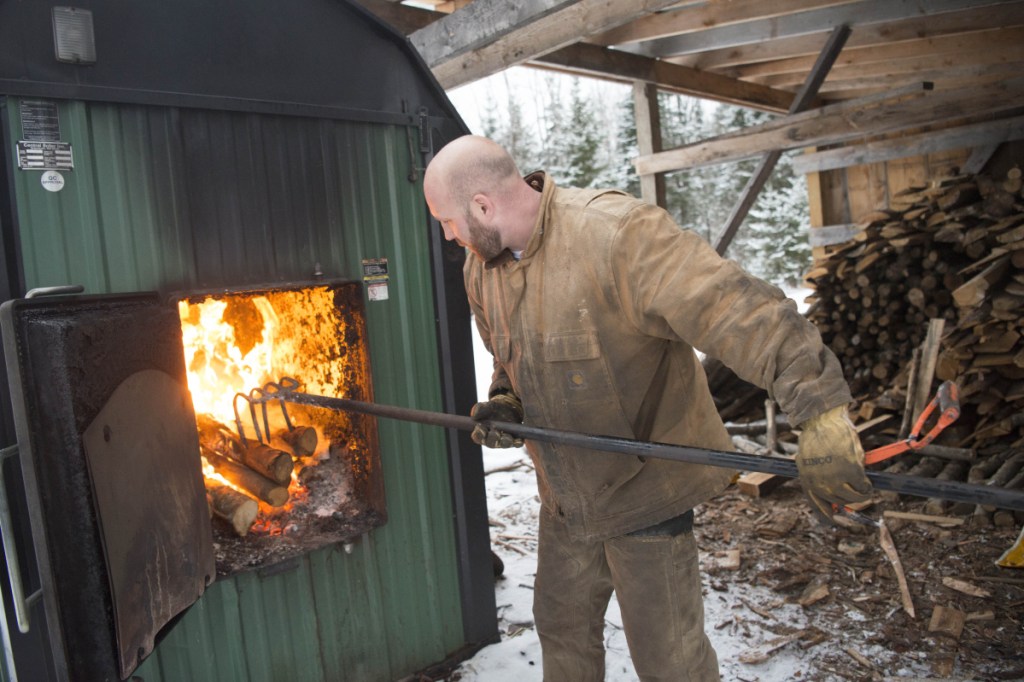
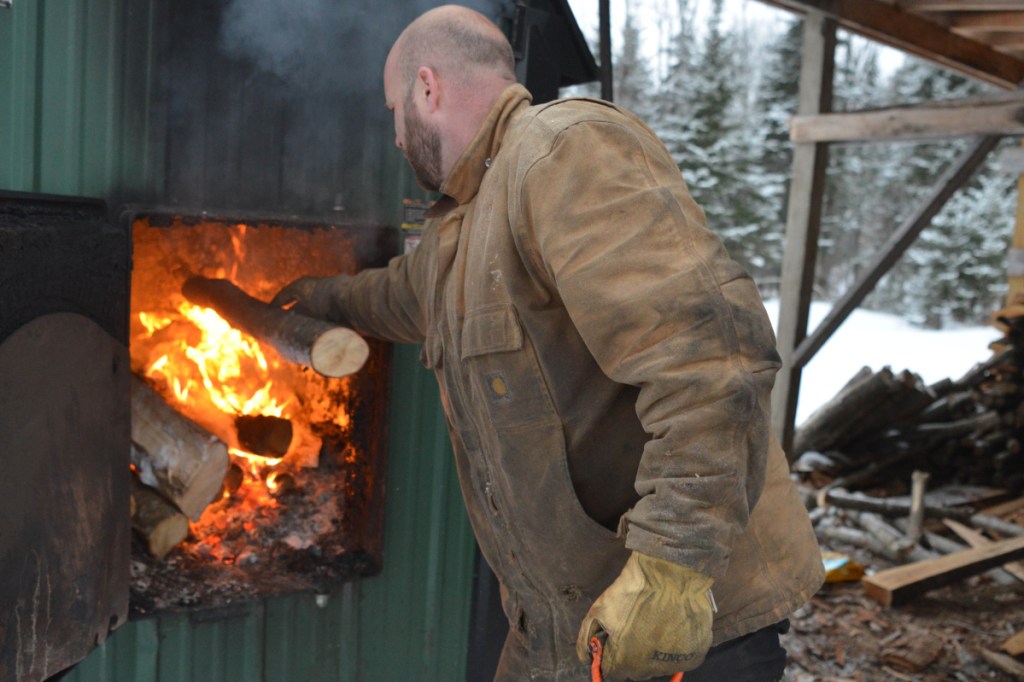
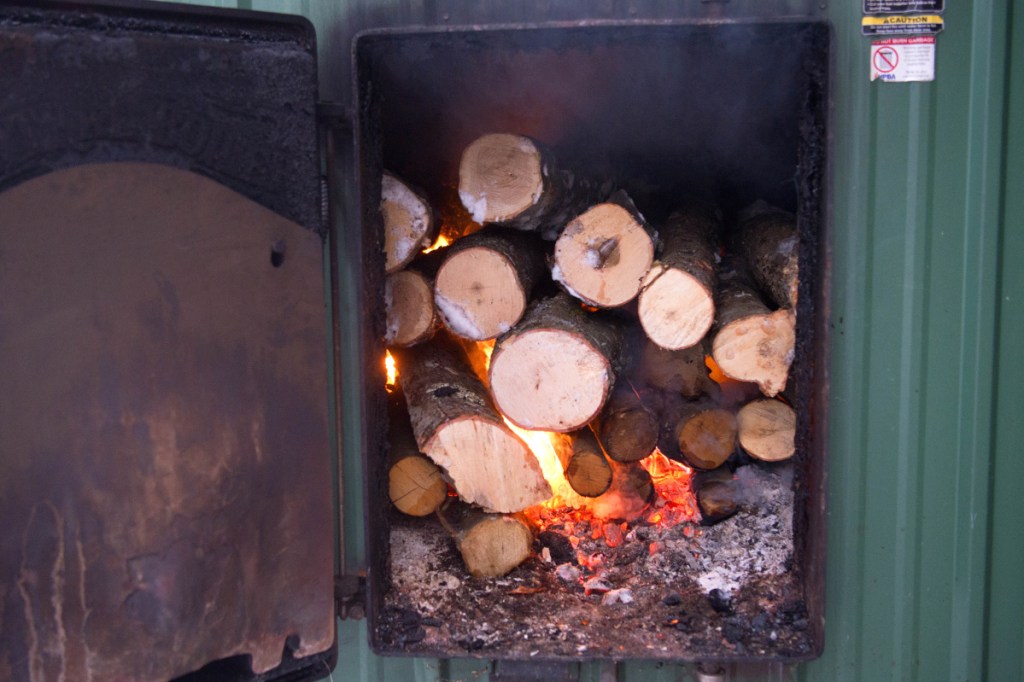
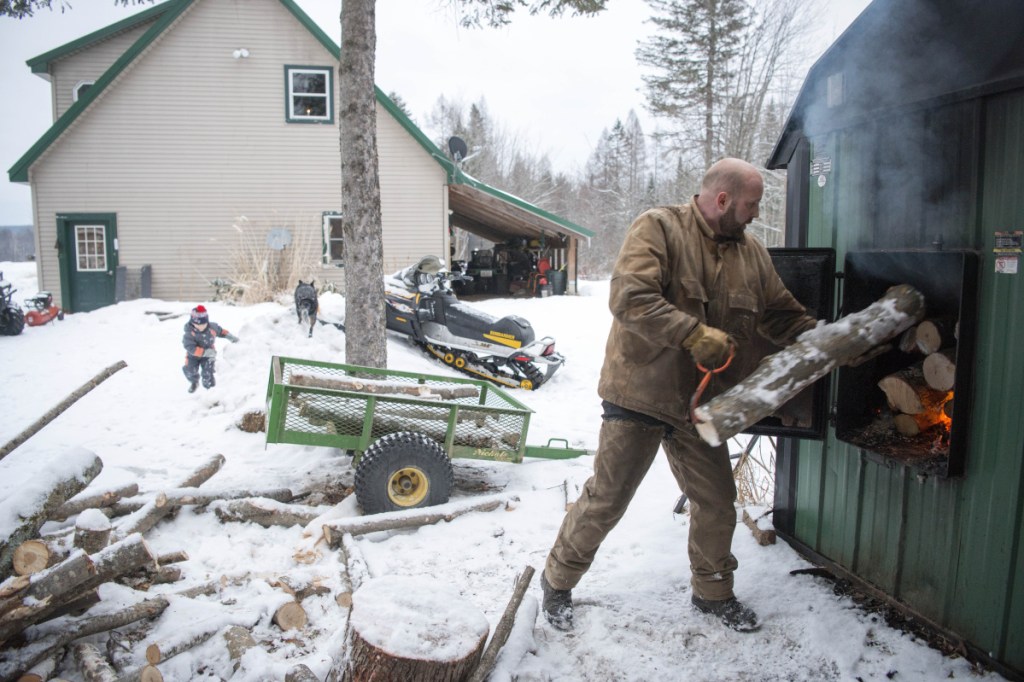
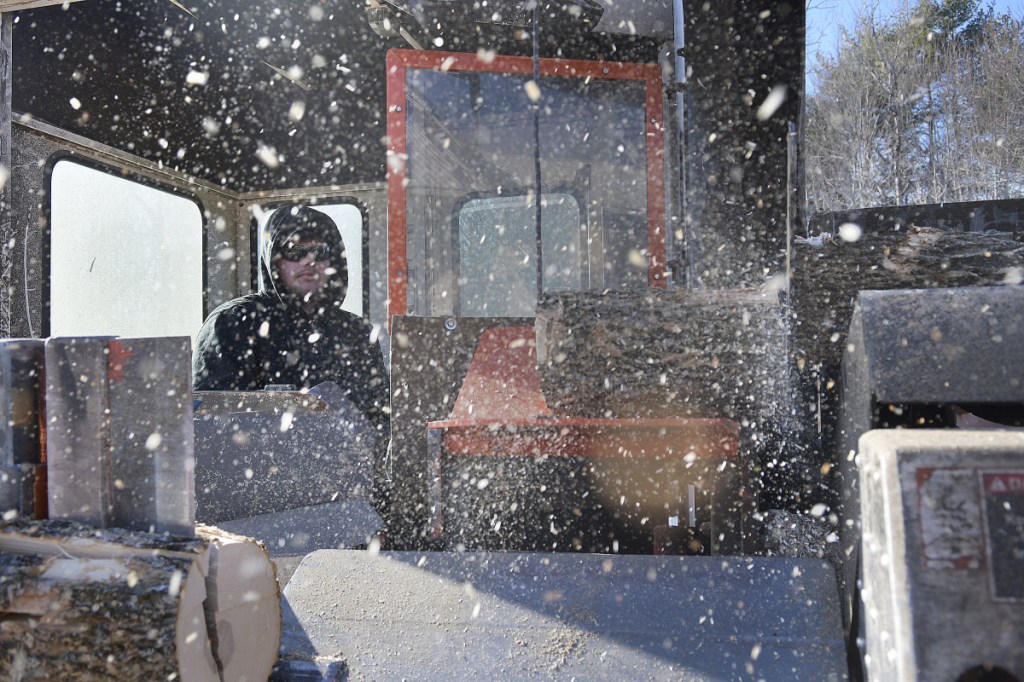

Success. Please wait for the page to reload. If the page does not reload within 5 seconds, please refresh the page.
Enter your email and password to access comments.
Hi, to comment on stories you must . This profile is in addition to your subscription and website login.
Already have a commenting profile? .
Invalid username/password.
Please check your email to confirm and complete your registration.
Only subscribers are eligible to post comments. Please subscribe or login first for digital access. Here’s why.
Use the form below to reset your password. When you've submitted your account email, we will send an email with a reset code.